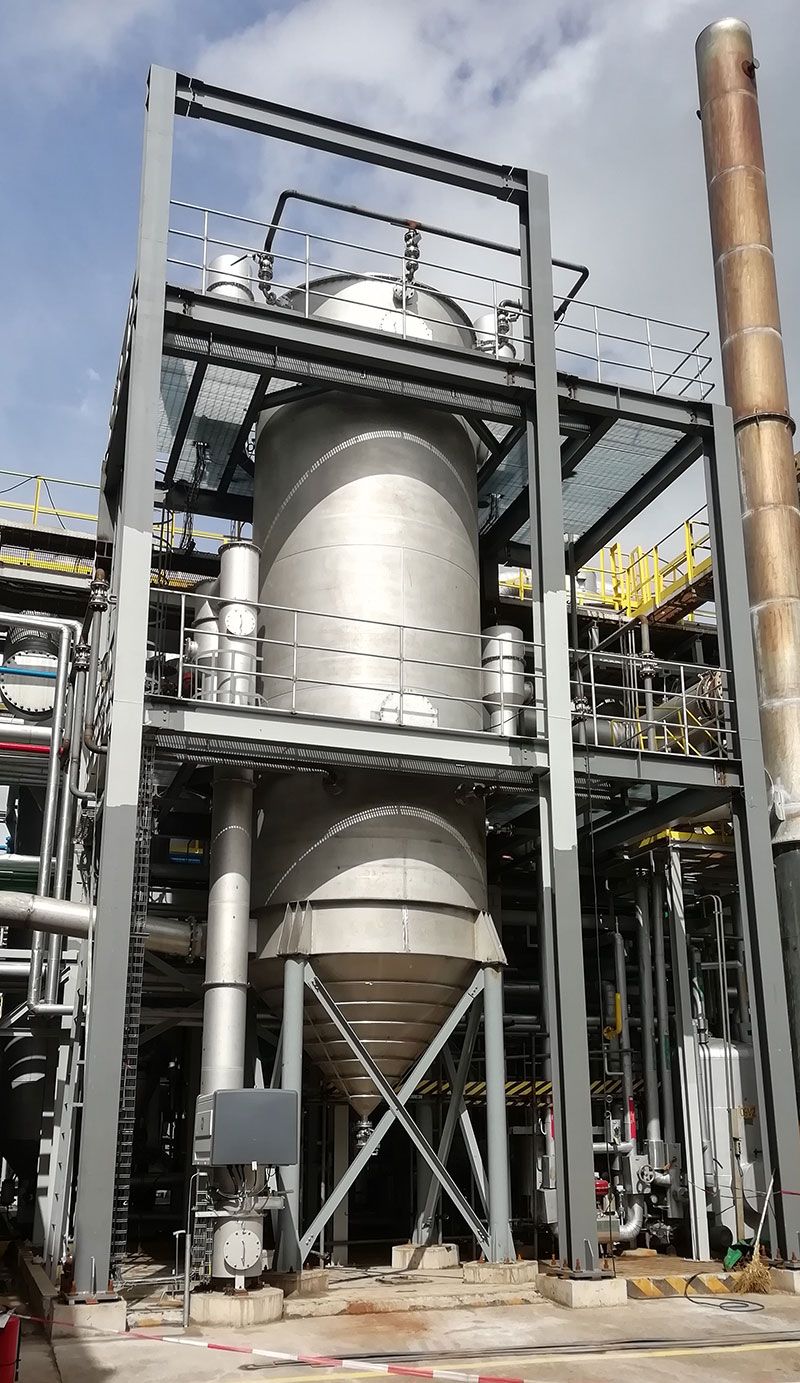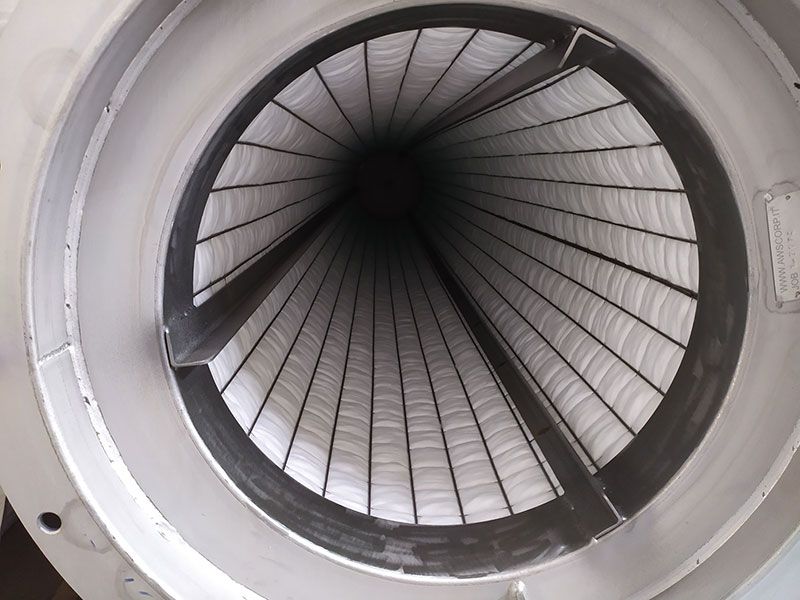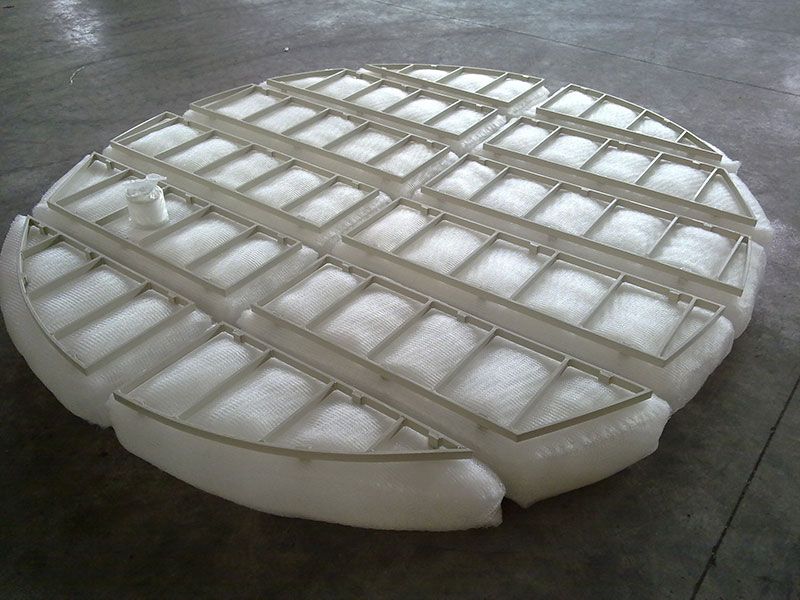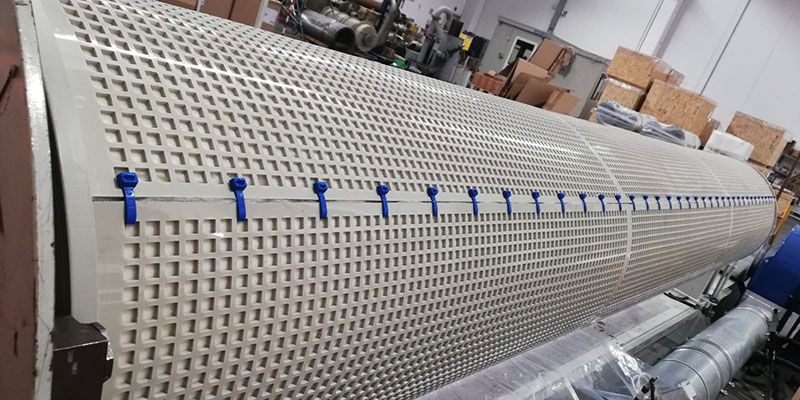AWS RELIABLE SOLUTIONS FOR SULPHONATION PLANTS
Organic sulfates and sulfonates are industrially manufactured by reacting organic compounds with diluted gaseous SO3. The reaction is called sulfation or sulfonation depending on the functional group created in the reaction product.
The products of sulphonation plants find prominent application as cleaning and foaming agents in detergents, as well as wetting and emulsifying agents in dyes, pigments, medicines, pesticides, etc.
The production of these chemicals inevitably involves the production of emissions and that’s where AWS can help with its reliable and cost-saving solutions.
In this article you will find four different cases of sulphonation industries that relied on AWS FiberwindTM candles, AWS ElectrocleanTM ESP (electrostatic precipitator) and AWS WirematTM meshpad as the best solution for sulphonic acid removal and for SO2 scrubber and SO3 aereosol removal.
01) APPLICATION: SULPHONIC ACID REMOVAL SECTION – ELECTROCLEANTM ESP

Process conditions:
- Gas flowrate: 15.000 Nm3/h
- Temperature: 50 °C
What needs to be filtered: sulphonic acid mist
Technical solution:
AWS supplied the ElectrocleanTM ESP with the following features:
Vessel
The vessel was made in SS316L but also carbon steel can be supplied as alternative material, depending on customer’s requirements and in case of specific processes only.
Internals
Tube bundle, ionizing electrodes & their support structures (top & bottom) and insulator compartments have been manufactured in SS316L.
Tube bundle, ionizing electrodes support structures (top & bottom) and insulator compartments can be also fabricated in carbon steel if allowed by the specific process conditions.
02) APPLICATION: SULPHONIC ACID REMOVAL SECTION – FIBERWINDTM CANDLES


Process conditions:
- Gas flowrate: 6.000 Am3/h
- Temperature: 80 °C
What needs to be filtered: Chlorine gas + concentrated sulphuric acid mist
Technical solution:
AWS supplied a set of FiberwindTM candles with the following features:
Screens and flanges
The most suitable material is SS316L since it is recommended in case of high concentrated sulphonic acid mist.
The plane top flange is fully adaptable to any type of tower.
Filtering media
Special glass fiber rope filtering media, where the entire filtration process happens.
AWS ensures a long-lasting product, made with quality material and proper openings to improve the strength of the structure.
The wooden box is definitely the best way to safely transport the filter to the customer’s site.
03) APPLICATION: SO2 SCRUBBER AND SO3 AEROSOL REMOVAL SECTION - WIREMATTM MESHPAD

Process conditions:
- Gas flowrate: 26.000 kg/h
- Temperature: 65 °C
What needs to be filtered: water mist and diluted sodium sulphate dust coming from packing bed SO2 absorption section and upstream the candles
Technical solution:
AWS supplied the WirematTM meshpad with the following features:
Grids
Polypropylene
Filtering media
Polypropylene
This is a special construction since the filtering media is 350 mm thick, compared to the standard thickness that is typically 150 mm. This is because in this specific case we had to increase the contact time between the gas and the filtering media and the efficiency removal of SO3 in this stage and in the final one as well (installation of FiberwindTM candles in final stage).
04) APPLICATION: SO2 SCRUBBER AND SO3 AEROSOL REMOVAL SECTION - FIBERWINDTM CANDLES

Process conditions:
- Gas flowrate: 14.500 Am3/h
- Temperature: 70 °C
What needs to be filtered: Chlorine gas + concentrated sulphuric acid mist
Technical solution:
AWS FiberwindTM were needed to filter water mist and diluted sodium sulphate dust coming from the packing bed of SO2 absorption section and downstream the meshpad.
Screens and flanges
Polypropylene is recommended in case of this specific environment.
Filtering media
Special glass fiber rope filtering media, where the entire filtration process happens.
AWS ensure a long-lasting product, made with quality material and proper openings to improve the strength of the structure.
The wooden box is definitely the best way to safely transport the filter to the customer’s site.